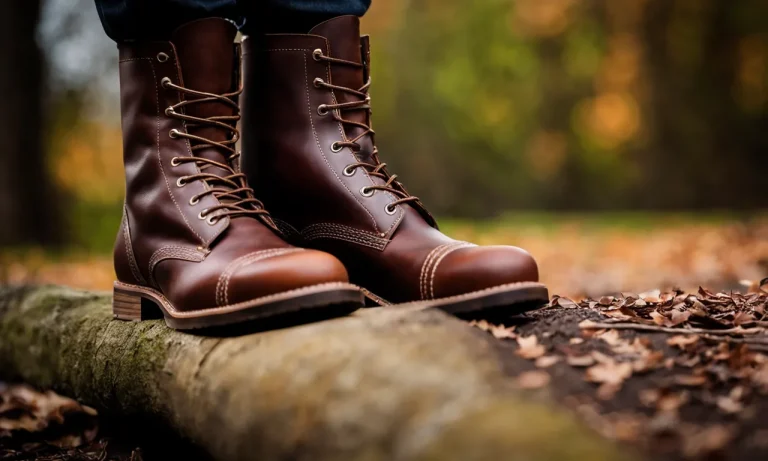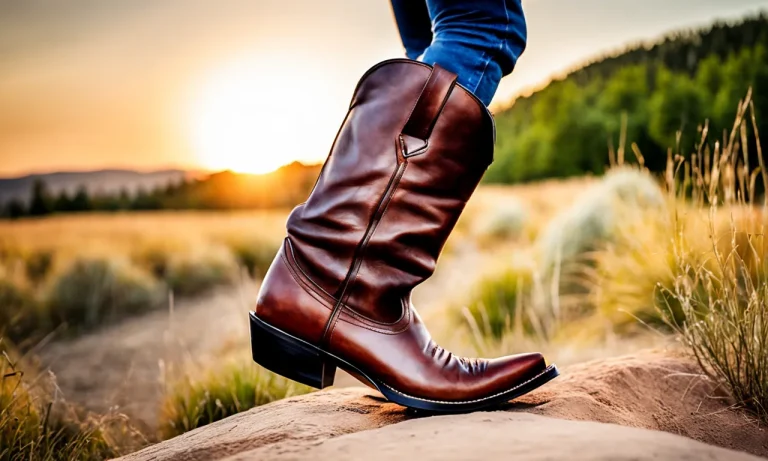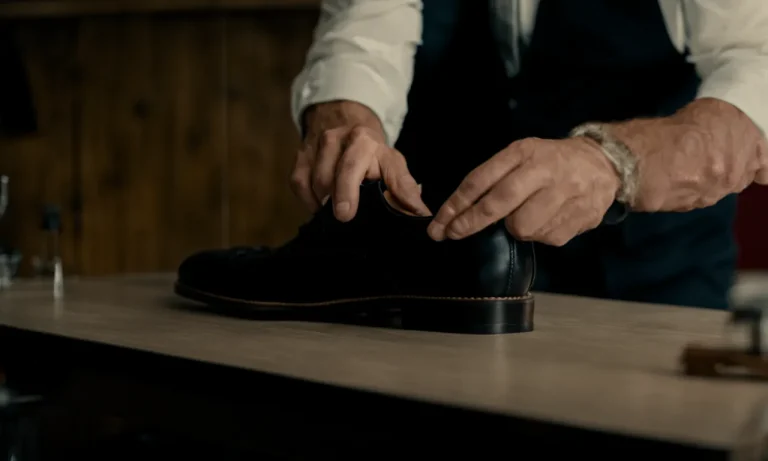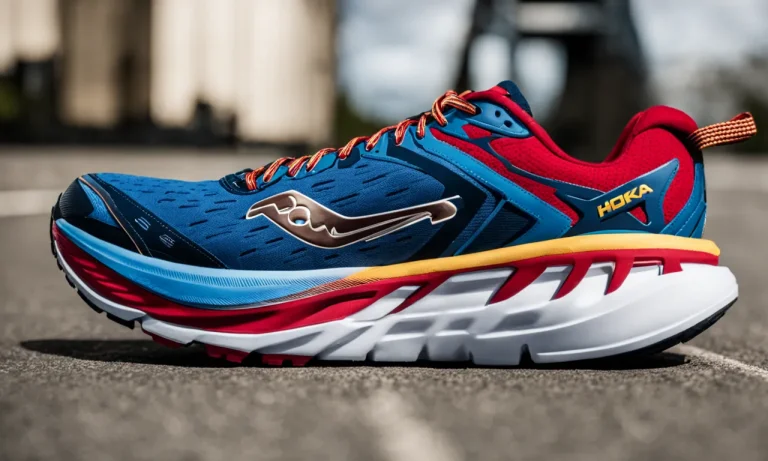If you wear steel toe boots for work, you know how uncomfortable they can be on your feet after long hours. But you don’t have to suffer in silence – there are ways to make your steel toes more comfortable.
If you’re short on time, here’s a quick answer to your question: Wear good socks, apply moleskin patches to pressure points, use shoe inserts, and break boots in slowly.
In this comprehensive guide, we’ll go over everything you need to know to make your steel toe boots feel like a dream on your feet. We’ll cover how to break them in properly, what socks and insoles work best, how to relieve pressure points, and more tips and tricks for happy feet in industrial footwear.
Break Them In Slowly
Steel toe boots are known for their durability and safety features, but they can be uncomfortable when first worn. To make the break-in process more manageable, it’s important to take it slow. By gradually increasing the amount of time you wear your boots, you can give your feet the chance to adjust to the new fit and prevent painful blisters.
Start by wearing them for short periods, such as an hour or two, and gradually increase the duration each day. This will allow your feet to gradually adapt to the boots without causing excessive discomfort.
Wear for short periods at first
When you first get a pair of steel toe boots, it’s tempting to wear them all day to speed up the break-in process. However, this can lead to discomfort and blisters. Instead, start by wearing them for short periods, such as during short walks or around the house.
This will allow your feet to get used to the boots without putting too much strain on them. As you become more comfortable, gradually increase the duration of wear until you can comfortably wear them for a full day.
Use a boot stretcher
If your steel toe boots are still causing discomfort after wearing them for a while, consider using a boot stretcher. A boot stretcher is a device designed to stretch the toe box of the boot, providing more room for your toes. Simply insert the stretcher into the boot and turn the knob to expand it.
Leave it in for a few hours or overnight, and you should notice a difference in the fit. This can help alleviate any pressure or tightness in the toe area and make your boots more comfortable to wear.
Apply leather conditioner
Leather boots can sometimes feel stiff and rigid, especially when they’re new. To make your steel toe boots more comfortable, try applying a leather conditioner. Leather conditioner helps soften the leather and improve its flexibility, making it easier for the boots to mold to your feet.
Apply the conditioner according to the product instructions and allow it to penetrate the leather. This will not only make your boots more comfortable, but it will also help prolong their lifespan.
Remember, breaking in steel toe boots takes time and patience. Be sure to listen to your feet and give them the rest they need if they start to feel sore. By following these tips, you can make your steel toe boots more comfortable and enjoy the benefits of their durability and safety.
Wear Moisture-Wicking Socks
One of the key factors in making steel toe boots more comfortable is choosing the right socks to wear with them. Moisture-wicking socks are an excellent choice as they help to keep your feet dry and reduce the chances of blisters and discomfort. Here are a few tips to consider:
Avoid cotton socks
Cotton socks, while comfortable for everyday wear, are not the best option for steel toe boots. Cotton tends to retain moisture, which can make your feet sweaty and uncomfortable throughout the day. It can also lead to the development of blisters and fungal infections.
It is advisable to avoid cotton socks when wearing steel toe boots.
Choose wool or synthetic fabrics
Instead of cotton, opt for socks made from wool or synthetic fabrics. These materials are moisture-wicking and can effectively draw sweat away from your feet, keeping them dry and comfortable. Wool socks are particularly great for regulating temperature, keeping your feet warm in cold weather and cool in hot weather.
Change socks halfway through shifts
If you have long work shifts that require you to wear steel toe boots for extended periods, it is a good idea to change your socks halfway through the day. This can help to refresh your feet and prevent excessive moisture buildup.
By keeping your feet dry, you can reduce the chances of discomfort and odor.
For more information on moisture-wicking socks and their benefits, you can visit www.verywellfit.com. They provide a detailed guide on different types of socks available in the market and their features.
Use Orthotic Insoles
One of the best ways to make steel toe boots more comfortable is by using orthotic insoles. These specially designed inserts can provide the much-needed cushioning and support for your feet, making your boots feel more comfortable throughout the day.
Look for cushioning and arch support
When choosing orthotic insoles for your steel toe boots, it’s important to look for ones that offer adequate cushioning and arch support. Cushioning helps to absorb shock and reduce the impact on your feet, while arch support provides stability and helps distribute your body weight evenly.
There are various types of cushioning materials used in insoles, such as gel, memory foam, or EVA foam. Each has its own benefits, so it’s worth trying out different options to find the one that suits you best.
Additionally, look for insoles with arch support that matches the natural curve of your feet.
Consider your foot type when choosing
When selecting orthotic insoles, it’s essential to consider your foot type. Different individuals have different arch types – high, medium, or low. Insoles with arch support that corresponds to your foot type can provide the optimal level of comfort.
If you’re unsure about your foot type, you can consult a podiatrist or use online resources to determine it. This will help you make an informed decision when purchasing orthotic insoles for your steel toe boots.
Replace insoles regularly
Over time, insoles can become worn out and lose their effectiveness. It’s recommended to replace them regularly, depending on the usage and the condition of the insoles. Replacing insoles when they start to show signs of wear and tear will ensure that your steel toe boots continue to provide optimal comfort and support.
By using orthotic insoles, looking for cushioning and arch support, considering your foot type, and replacing insoles regularly, you can significantly enhance the comfort of your steel toe boots. Say goodbye to sore feet and hello to a more comfortable workday!
Relieve Pressure Points
Steel toe boots are essential for protecting your feet in hazardous work environments, but they can sometimes cause discomfort due to the pressure they exert on certain areas of the foot. However, there are several methods you can try to alleviate these pressure points and make your steel toe boots more comfortable.
Apply moleskin padding
Moleskin padding is a great solution for relieving pressure points in steel toe boots. This soft and adhesive material can be applied to areas where the boot rubs against your foot, such as the toes or the sides of the foot. It provides a cushioning effect, reducing friction and preventing blisters.
Applying moleskin padding is easy – simply cut it to the desired size and stick it onto the inside of your boots.
Use blister bandages
If you develop blisters from the pressure points caused by your steel toe boots, blister bandages can provide much-needed relief. These bandages are designed to protect the blistered area and promote healing.
They create a barrier between your foot and the boot, reducing friction and preventing further irritation. Make sure to clean and dry the blistered area before applying the bandage, and replace it regularly to prevent infection.
Try metatarsal pads
Metatarsal pads are another effective solution for relieving pressure points in steel toe boots. These pads are placed inside the shoe, specifically under the ball of the foot. They help distribute the pressure more evenly, reducing discomfort and preventing pain in the metatarsal area.
Metatarsal pads come in various sizes and materials, so you can choose the one that best suits your needs.
Remember, it’s important to find the right combination of methods that work for you. Everyone’s feet are different, so what works for one person may not work for another. Experiment with different techniques and products until you find the most comfortable solution for your steel toe boots.
Use Powder and Sprays
Apply foot powder for moisture absorption
One of the most common causes of discomfort in steel toe boots is excessive moisture buildup. When your feet sweat, it can lead to blisters, odor, and overall discomfort. To combat this issue, consider using foot powder specifically designed for moisture absorption.
This powder helps to keep your feet dry by absorbing sweat and reducing friction. Simply sprinkle some powder in your boots before putting them on, and you’ll notice a significant improvement in comfort throughout the day. Some popular foot powders include Gold Bond and Dr. Scholl’s.
Try anti-friction sprays
Another great option for increasing comfort in steel toe boots is using anti-friction sprays. These sprays create a protective barrier between your feet and the boots, reducing friction and preventing blisters.
They are especially helpful if you find that certain areas of your feet are prone to rubbing or irritation. Simply spray the product onto the areas of concern before putting on your boots, and you’ll experience less discomfort throughout the day.
Some popular anti-friction sprays include Body Glide and Band-Aid Friction Block Stick.
Remember, it’s important to choose products that are specifically designed for use in footwear. Using regular talcum powder or other generic sprays may not provide the same level of comfort and effectiveness.
Look for products that are labeled as foot powders or anti-friction sprays, and follow the instructions for proper application.
In addition to using powders and sprays, it’s also important to ensure that your steel toe boots are the right size and properly fitted to your feet. Ill-fitting boots can cause discomfort regardless of any additional measures you take.
Consider getting a professional fitting or consulting with a knowledgeable salesperson to ensure that you have the most comfortable boots possible.
Conclusion
By breaking in your boots gradually, choosing the right socks and insoles, adding padding, and using powders and sprays, you can make your steel toes much more comfortable for all-day wear. Don’t settle for sore, blistered feet – take action to get the most comfy industrial footwear possible.
With the tips in this guide, you’ll be strutting pain-free in your steel toes in no time!






